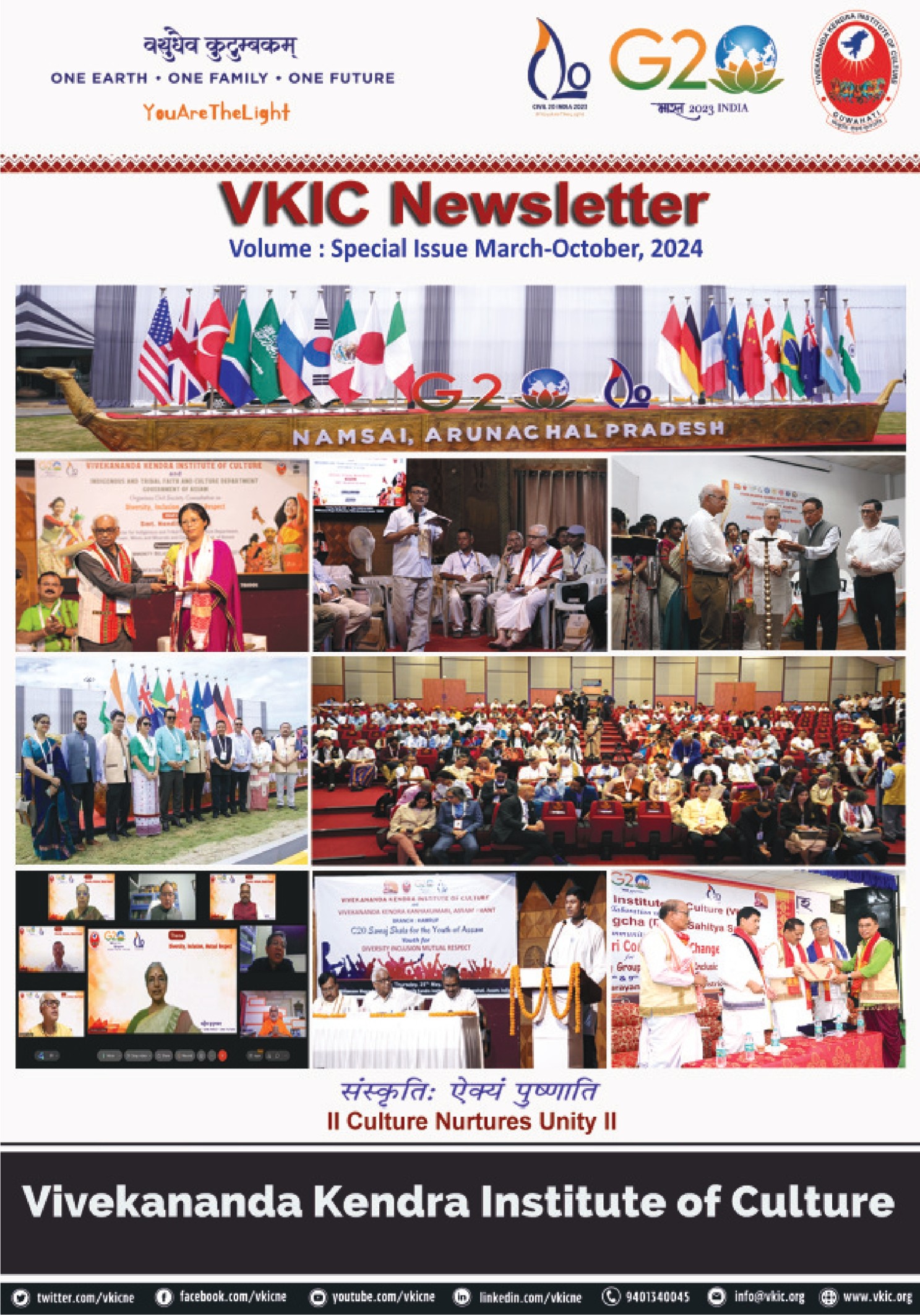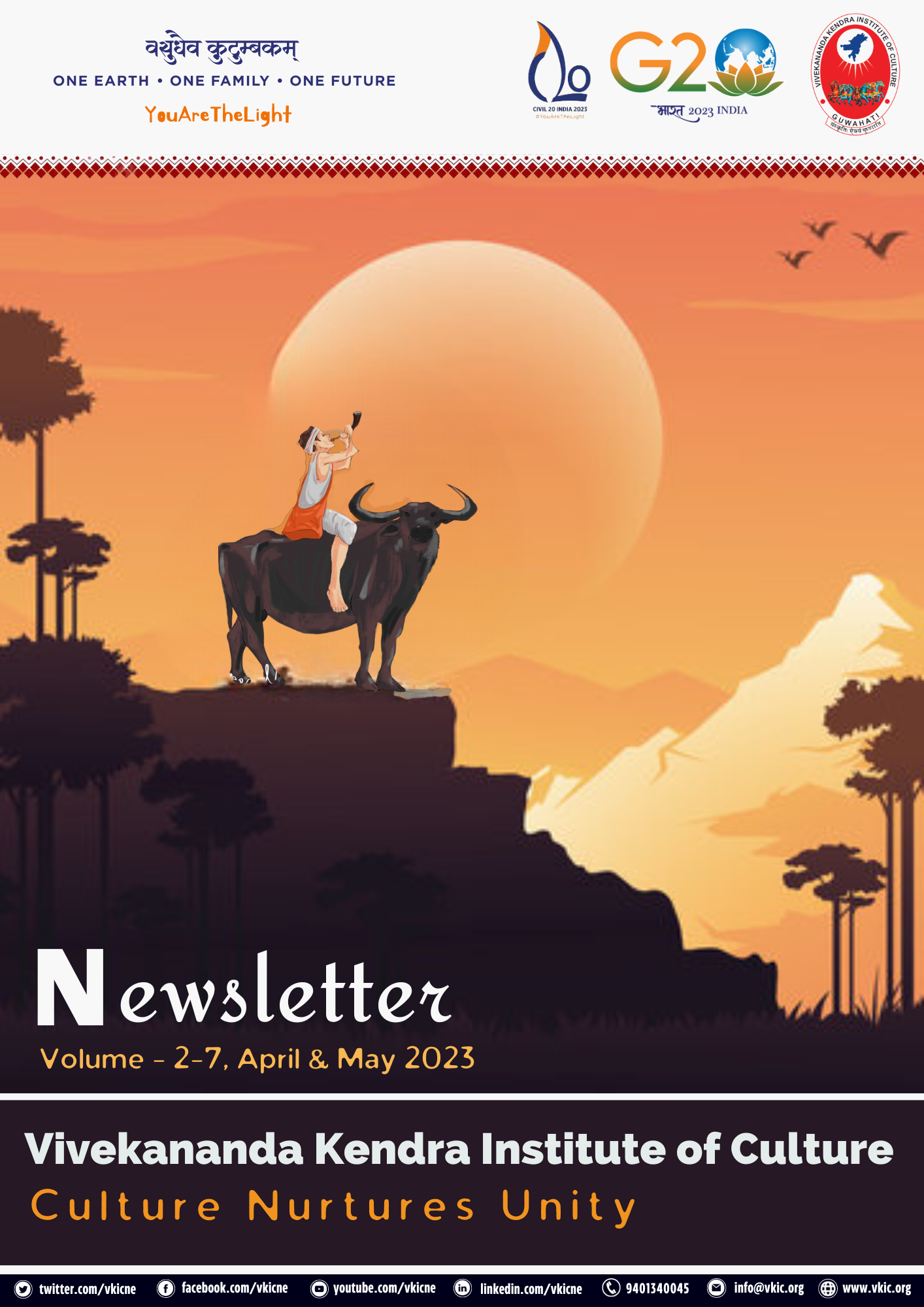A popular but unfounded belief has been spread that Hindus have thirty-three crore (33,00,00,000) gods. It is a misunderstanding of the Vedic concept of the State, and hence a misinterpretation of the word koti. Thirty-three divinities are mentioned in the Yajur-Veda, Atharva Veda, áatapatha-Brāhmana and in other Vedic and later texts. The number thirty-three occurs with reference to divinities in the Parsi scriptures of Avesta as well.
The expression trayastrimśa deva is found in the list of classes of gods in Sanskrit Buddhist texts like the Divyāvadāna and Suvar¸a-bhāsottama-sūtra. The tāvatimsa-loka is found in the Jātakas and other Pali works. Lord Buddha went to the Tryastrimśa heaven to preach to his mother who was born there.
The word koti in trayastrimśat koti does not mean the number ‘thirty-three crore’. Here koti means ‘supreme, pre-eminent, excellent’ that is, the 33 supreme divinities. The word koti has the same meaning as ucca koti. It was a problem even in AD 725 when áubhākarasimha and his Chinese colleague I-hsing translated the Mahāvairocana-sūtra into Chinese. They rendered the compound sapta-koti-buddha as shichi (sapta) kotei (koti) butsu (Buddha) in which they did not translate the word koti but transliterated its pronunciation as kotei. The Buddhas were not ‘seven crore’, but only ‘Seven Supreme Buddhas’: six predecessors and the historic Buddha.Tibetan masters who translated Sanskrit texts into Tibetan, rendered koti by rnam which means ‘class, kind, category’.
The thirty-three supreme deities are specified in the áatapatha-brāhmana 4.5.7.2 as: 8 Vasus + 11 Rudras +12 Adityas + 2 Heaven and Earth (8 + 11 + 12 + 2= 33). Divinities are symbols of civilization, the quintessence of human existence on the physical and the metaphysical planes:
8 Vasus symbolise prosperity
11 Rudras symbolise invulnerable security
12 Adityas symbolise an enlightened intellectual order and illuminating spiritual flamonium
(brahmanya)
Heaven and Earth symbolise the spatial dimension of life
The Trayastrimśa Divinities are Supreme or koti because they anoint Indra, the mightiest, the most powerful… for paramount rule, for self-rule etc. all the cakravartin kings are crowned with Indra’s mahābhiÀeka to inculcate values in the king-to-be. This is detailed in the Aitareya Brāhmana in its chapter on rājasūya. Eight classes of divinities anoint Indra for eight manifestations of power:
Vasu’s East sāmrājya साम्राज्य overlordship
Rudra’s South bhaujya भौज्य paramount rule
Aditya’s West svārājya स्वराज्य self-rule
Visve Devah North vairajya वैराज्य sovereignty
Marut’s Heaven pārameÀ¶hya पारमेष्ठ्य supreme authority
Angiras ” rājāya राज्य kingship
Sadhya’s Earth maharajya महाराज्य great kingship
Aptya’s ” adhipatya आधिपत्य suzerainty
The modern political term svaraj derives from this passage. It was given a contemporary meaning by Swami Dayananda after the war of 1857. It was made a clarion call of national awakening by Lokamanya Tilak in “Svaraj is my birth right”. It was objected to by the communal mindscape, hence it was sidelined and replaced by the Persian āzādi or “rule of the high-born” (āzād from Sanskrit ājāta). It was the elite ideal of Iran, attested to form the most ancient period of Zoroaster’s Avesta, down to Pahlavi and New Persian.
The ruler and his modern avatar the Leader, has to be the cadence of the timeless in everyday life. He has to be the protective wing to benefit life. He has to be the master of positive forces for the well-being of all. The divinities endow him with both the “way of life” and the “way of being”. They are both the profundity and simplicity of: “Help others”. They are a pledge of attainment that springs in the heart and reaches the hand in action. The Trayastrim¿a Devas are the Divine Becoming, the paradigm of values, the timeless protective in the gestures of everyday governance. Hence they are the Culminating Point, the koti, the Supreme.


